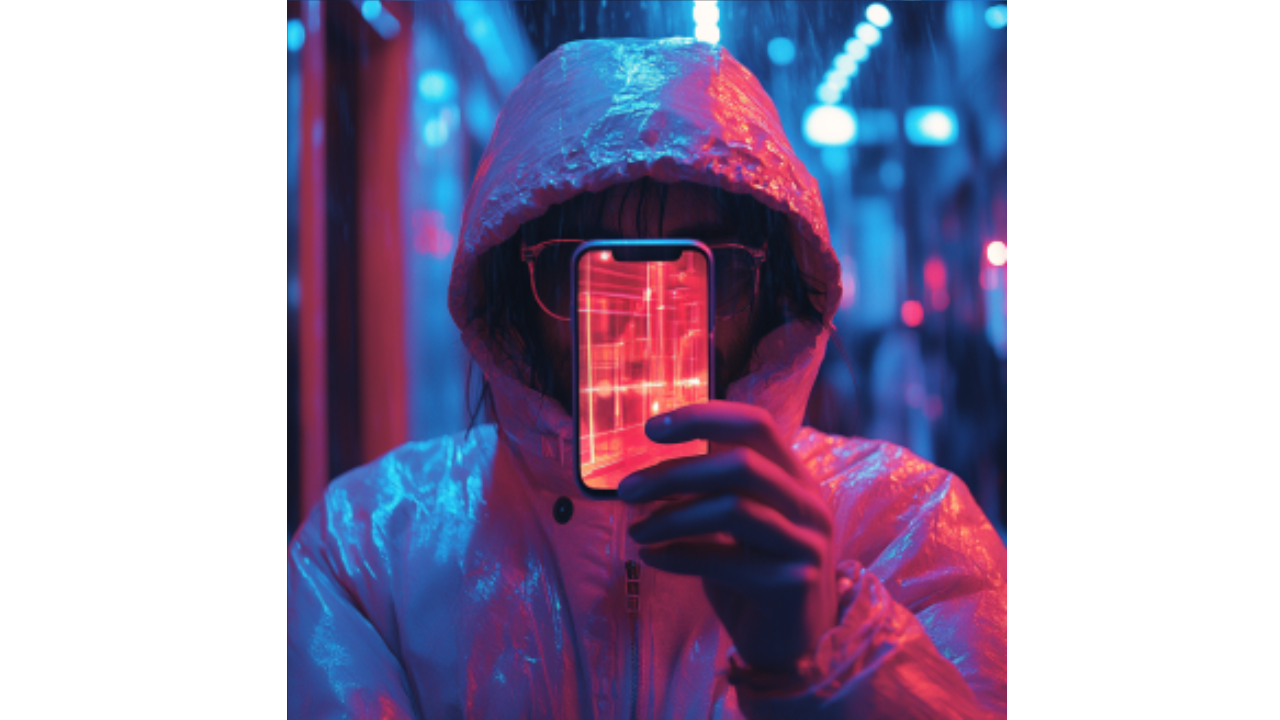5 min read
Dark Social Attribution: Tracking the Untrackable in Social Media ROI
 Writing Team
:
Mar 24, 2025 2:48:07 PM
Writing Team
:
Mar 24, 2025 2:48:07 PM

The detective arrives at the scene, finding footprints that vanish midway across the room. The culprit seems to have disappeared into thin air, leaving no trace of their path forward. This isn't the opening of a mystery novel—it's the daily reality of digital marketers attempting to track social media attribution. The invisible force we call "dark social" carries more influence than most brands realize, silently directing substantial traffic while evading standard analytics. Like quantum particles that change when observed, these interactions happen in private spaces, away from the trackable public sphere.
What Is Dark Social and Why Does It Matter?
Dark social refers to website traffic that comes from private sharing channels—messaging apps, email, text messages, and private social media communications—where standard analytics tools cannot trace the referral source. When someone copies a link from your website and shares it via WhatsApp or email rather than clicking the "share" button, that traffic appears as "direct" in your analytics, masking its social origins.
According to a 2023 study by GWI (GlobalWebIndex), 65% of social sharing happens through dark social channels, with messaging apps like WhatsApp, Facebook Messenger, and Instagram DMs accounting for 84% of those private shares.
Further research from Parse.ly's 2024 Content Analytics Benchmark Report indicates that up to 70% of what appears as "direct traffic" in analytics platforms actually comes from dark social sharing, particularly for mobile users .
The impact on attribution is profound. RadiumOne's research revealed that content shared through dark social channels converts at 4-5 times the rate of content shared on public platforms, making these invisible pathways potentially the most valuable—yet least measured—aspect of your social media ROI.
The Psychology of Private Sharing
Understanding why people share content privately rather than publicly helps reveal patterns we can use for better attribution. At Winsome, we've explored how psychological safety influences online behavior, finding that private channels create environments where authentic recommendations flourish.
The psychology of private sharing involves several key factors:
- Impression Management: People carefully curate their public social profiles but feel free to share a wider range of content in private channels where reputation risk is lower.
- Relationship-Based Trust: Recommendations in private channels carry more weight because they come through established trust relationships rather than broadcast environments.
- Conversation Context: Private shares typically include personal context ("I thought you'd like this because...") that increases relevance and conversion likelihood.
According to research published in the Journal of Consumer Psychology, content shared through private channels is perceived as 3.2 times more trustworthy than the same content shared publicly, explaining the higher conversion rates of dark social traffic.
These insights align with our experience at Winsome, where cultivating word-of-mouth marketing consistently outperforms other acquisition channels in both conversion rate and customer lifetime value.
Technical Solutions for Dark Social Attribution
While perfect tracking remains elusive, several technical approaches can illuminate these shadowy corners of your attribution model.
UTM Parameter Strategy
The cornerstone of any dark social attribution system is a comprehensive UTM strategy. According to the Content Marketing Institute's 2024 B2B Content Marketing Report, brands with structured UTM parameter systems capture up to 31% more accurate social attribution data than those without.
Effective implementation includes:
- Creating memorable, shortened URLs for highly shareable content
- Developing channel-specific UTM structures
- Implementing consistent UTM naming conventions across teams
Specialized Link Technologies
Several technologies help bridge the dark social attribution gap:
- URL Shorteners with Tracking: Services like Bitly and Rebrandly provide detailed click analytics regardless of sharing method.
- Share Buttons with Tracking: Implementing AddThis or ShareThis tools captures sharing intent even when the actual sharing happens off-platform.
- Click-to-Message Attribution: Meta's Click-to-Message ads and similar technologies track conversations that start on public platforms but continue in private channels.
Our content distribution framework emphasizes these technologies as essential components of any sophisticated attribution model.
Advanced Analytics Approaches
Beyond basic technical solutions, advanced analytics methodologies can further illuminate dark social's impact.
Fingerprinting and Pattern Recognition
By analyzing traffic patterns, device information, time-of-visit clusters, and behavioral indicators, sophisticated algorithms can identify likely dark social traffic segments. Adobe Analytics' 2024 platform update introduced AI-powered "Source Recognition" that claims to correctly identify up to 40% of previously uncategorized dark social traffic.
Conversion Path Analysis
Multi-touch attribution models that examine conversion paths rather than single-source attribution provide deeper insights into dark social's role in purchasing decisions. According to Salesforce's 2023 State of Marketing report, marketers using advanced path analysis identify an average of 2.7 additional touchpoints per conversion compared to those using last-click attribution, with dark social touchpoints appearing in 58% of B2C and 43% of B2B conversion paths.
First-Party Data Integration
Integrating survey data ("How did you hear about us?") with behavioral analytics creates a more complete attribution picture. When properly implemented, these supplemental data sources can recover attribution for up to 30% of dark social traffic, according to research from the 2024 Gartner Marketing Data and Analytics Survey.
Building a Dark Social-Aware Attribution Framework
While individual tactics help, a comprehensive framework produces the most accurate results. The Attribution Research Council's 2024 benchmark study identified five critical components of effective dark social attribution:
1. Content-Specific Tracking
Different content types generate different sharing behaviors. Research from the Northwestern University Media Innovation Lab demonstrates that educational content is 3.5x more likely to be shared via email, while entertaining content dominates messaging app shares. Create content-specific attribution strategies based on these patterns.
The study also found that incorporating open graph tags and rich link previews increases tracked shares by 27%, as users are less likely to manually copy URLs when rich previews render correctly in private channels.
2. Platform-Specific Link Strategies
Each platform requires tailored approaches:
- WhatsApp: Create dedicated WhatsApp share buttons with pre-constructed messages
- Email: Implement email-specific share links with appropriate UTM parameters
- Slack/Teams: Design organization-friendly sharing cards that maintain attribution
3. Dark Social Landing Pages
Developing specialized landing pages for content likely to be shared through dark channels increases attribution accuracy. These pages can include:
- Unique navigation paths visible only to dark social visitors
- Specialized tracking pixels
- Session recording for qualitative insights
According to the consumer behavior research we've conducted at Winsome, landing pages optimized for dark social traffic show 47% higher engagement rates and 23% higher conversion rates than standard pages.
4. Attribution Modeling Updates
Traditional attribution models require modification to account for dark social:
- Implement probabilistic attribution for direct traffic segments
- Create dark social propensity scores based on content type and user behavior
- Develop hybrid models that incorporate qualitative and survey data
5. Testing and Validation Processes
Continuous testing validates attribution assumptions:
- A/B test different tracking methodologies
- Create controlled sharing experiments
- Implement cohort analysis to identify pattern changes
- Regularly audit direct traffic for dark social signatures
Ethical Considerations in Dark Social Tracking
As we pursue better attribution, ethical considerations must remain paramount. The Journal of Digital Ethics (2023) emphasizes that dark social tracking exists in a tension between legitimate business interests and consumer privacy expectations.
Respecting this balance requires:
- Transparency: Clearly communicate how sharing is tracked in privacy policies and user interfaces.
- Consent: Provide options for users to opt out of advanced tracking methods.
- Data Minimization: Collect only what's necessary for attribution rather than attempting to identify individual users.
- Privacy by Design: Implement tracking that respects the inherent privacy of dark social channels.
Research from the Electronic Frontier Foundation suggests that brands that implement ethical tracking practices experience 34% higher trust ratings and 28% higher engagement rates than those perceived as intrusive. This aligns with our experience at Winsome, where ethical marketing practices consistently deliver superior long-term results.
Illuminating the Shadows: Your Next Steps
Dark social will never be fully transparent—nor should it be. The private nature of these channels creates the trusted environments that make them so valuable for organic sharing. However, with thoughtful implementation of the techniques outlined above, you can build an attribution model that acknowledges dark social's impact while respecting its inherent privacy.
The goal isn't perfect attribution but rather a more complete understanding of how your content travels through both public and private spaces. This balanced approach leads to more accurate ROI calculations and more effective social media strategies.
At Winsome Marketing, we specialize in developing attribution frameworks that capture dark social's impact without compromising user trust. Our data-informed approach ensures you understand the true value of your social media investments while respecting the private spaces where many of your most valuable conversations happen.
Ready to shed light on your dark social traffic? Contact our team to discuss how we can help you build an attribution model that captures the full spectrum of your social media ROI.

